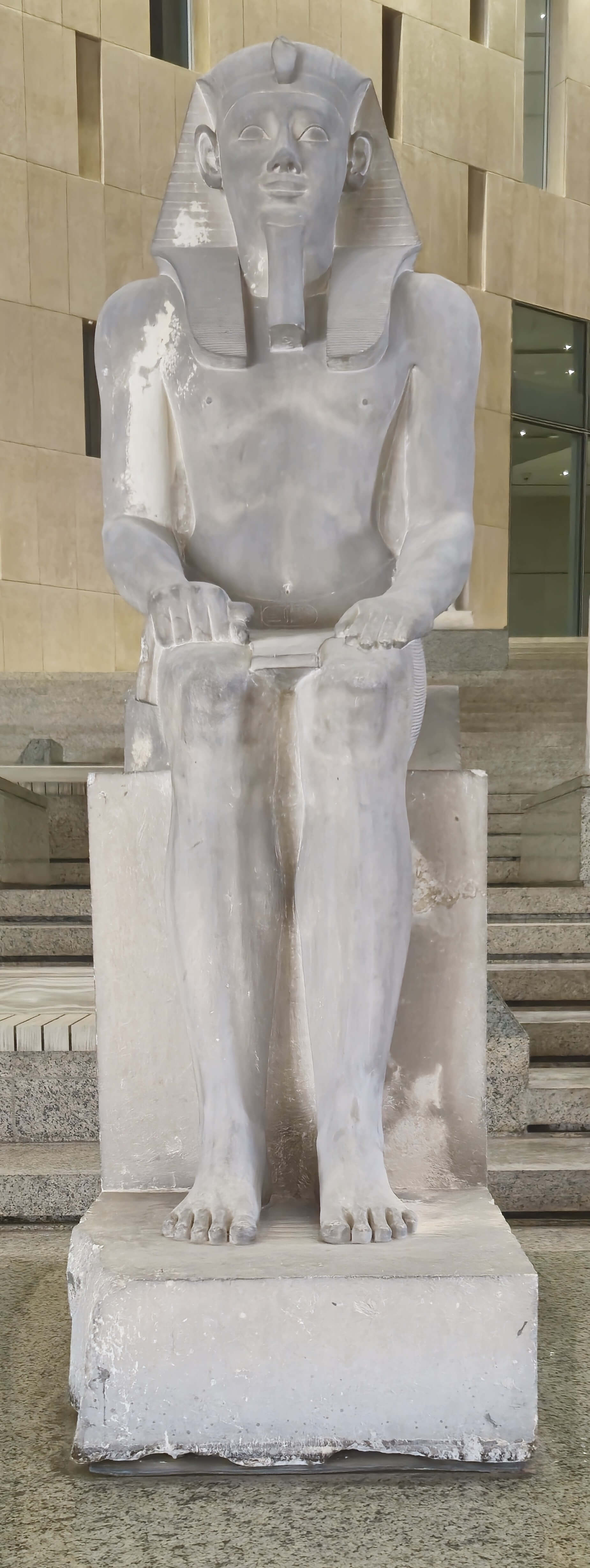
GEM 1689
King Senwosret I
In 1894, the French Egyptologists Joseph Gautier and Gustave Jéquier made a remarkable discovery in the sands of Lisht, a major royal necropolis of Egypt’s Middle Kingdom. Near the mortuary temple of King Senwosret I, they uncovered a rectangular pit on the eastern side of the pyramid complex. Inside lay a collection of over ten finely carved statues of the king, each sculpted from limestone or red granite. One of the most prominent statues depicted Senwosret I seated upon his throne, a classic pose that embodied royal majesty and divine authority.
Senwosret I, who ruled around 1956–1911 BCE, was the second king of the 12th Dynasty and is widely credited with stabilizing Egypt after the political fragmentation of the First Intermediate Period. He was the son of Amenemhat I, who had moved Egypt’s power center north to Itjtawy, near Lisht, marking a new era of centralized administration and artistic revival. The artistic legacy of Senwosret I is among the most refined in all of Egyptian ... Entdecken Sie mehr mit Premium!
Entsperren Sie die vollständige Geschichte dieses ArtefaktsWerden Sie Premium-Mitglied, um auf die vollständige Beschreibung, Audioguides und exklusive Inhalte aller Artefakte zuzugreifen.Erhalten Sie vollen Zugriff auf Audio und Beschreibung der wichtigsten Artefakte des GEM für nur 1,99 $
Suchen Sie ein weiteres Artefakt?